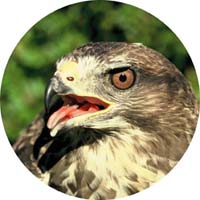WHAT MAGNIFICATION DO I NEED?
Scope magnifications range from 15x to 60x and some go even higher power. For a fixed eyepiece, 20x or 30x is the normal choice. Some telescopes have a range of interchangeable eyepieces available, so you can choose more than one. Wide-angle eyepieces of 20x to 30x are good for general use.A 40x eyepiece may be more useful for long distance work.When using higher magnification, the image brightness and field of view decreases. Shimmer in the air can also be a problem and any shake from the support is magnified. This means that higher power eyepieces are better used in bright conditions for static birds. A 20x or 22x wide-angle eyepiece will maximise the amount of light reaching the eye.Zoom eyepieces work well with some telescopes, usually ones with a larger objective lens. Typical zoom ranges covered: 15x to 40x or 20x to 60x. Shimmer in the air can also be a problem and any shake from the support is magnified. This means that higher power eyepieces are better used in bright conditions for static birds. A 20x or 22x wide-angle eyepiece will maximise the amount of light reaching the eye.Zoom eyepieces work well with some telescopes, usually ones with a larger objective lens. Typical zoom ranges covered: 15x to 40x or 20x to 60x.
But at higher magnification, the amount of light passing through to the eye is reduced.
Smaller telescopes are ideal for general work. They typically have 60mm objective lenses. Some manufacturers offer telescopes with larger objective lenses - 75mm and 80mm. These perform better in low light but a large lens adds to the size and weight of the scope. Because of the increased light transmission with a larger objective, zoom eyepieces are better suited to this type of telescope.
|

